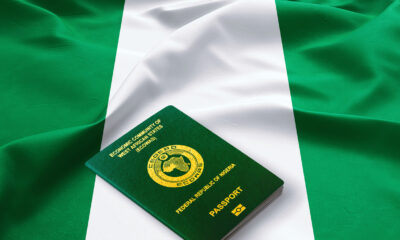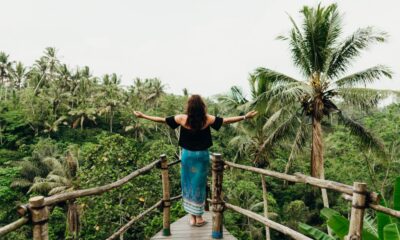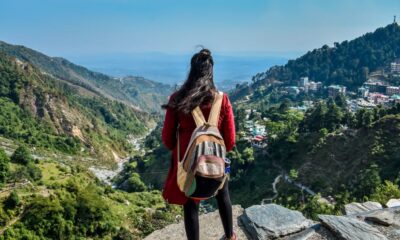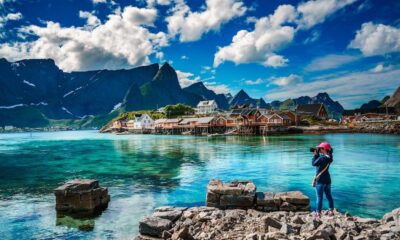TRAVEL
Here Are The Cultural Differences To Expect When Travelling Abroad
Published
4 months agoon
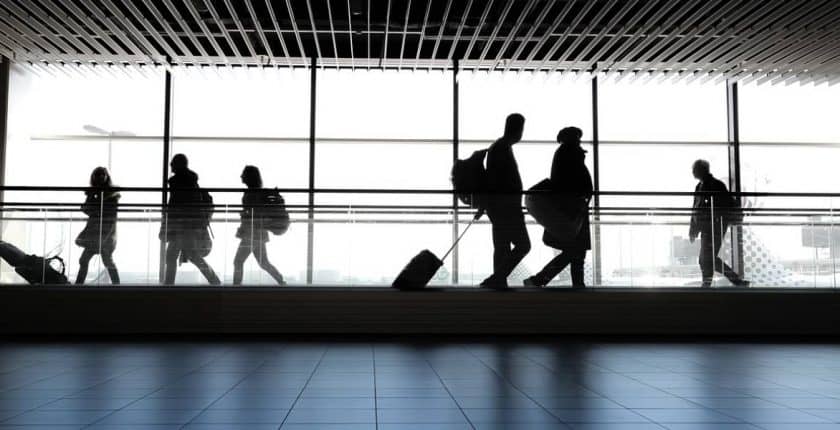
When travelling abroad, you must encounter cultural differences that can both surprise and enrich your travel experience. Understanding and respecting these differences is key to having a positive journey and meaningful interactions with locals.
Travelling to a new country is an exciting adventure filled with opportunities to explore different cultures. However, it’s important to be aware of cultural differences to avoid misunderstandings and make the most of your trip.
In this article, we will explore some common cultural differences you might encounter when travelling abroad. These differences could be in different areas of daily life and social interaction.
Body Language and Communication
One of the most immediate differences you’ll notice when travelling abroad is language. Even if you’ve studied the local language, you may find that accents, dialects, and colloquialisms present unexpected challenges. Non-verbal communication can also vary significantly between cultures.
The way people communicate and interpret body language varies widely across cultures. In some countries, direct eye contact is seen as a sign of respect, while in others it can be considered rude. Personal space is another important factor.
Some cultures value personal space, while others are more comfortable with close proximity. Gestures that are common in one culture might be offensive in another.
For example, the “thumbs up” gesture is positive in many Western countries, but it can be insulting in some Middle Eastern countries.
Food and Dining Etiquette
Food customs and table manners are other areas where you’re likely to encounter cultural differences. The types of food served, meal times, and dining rituals can vary greatly.
In some cultures, it’s customary to eat with your hands, while in others, specific utensils are used for different dishes. The order in which food is served and consumed may also differ.
In some countries, it’s polite to clean your plate, while in others, leaving a small amount of food is seen as good manners. Tipping practices can also vary widely, from being expected and necessary to being considered offensive.
Research local dining customs before your trip to avoid unintentional faux pas.
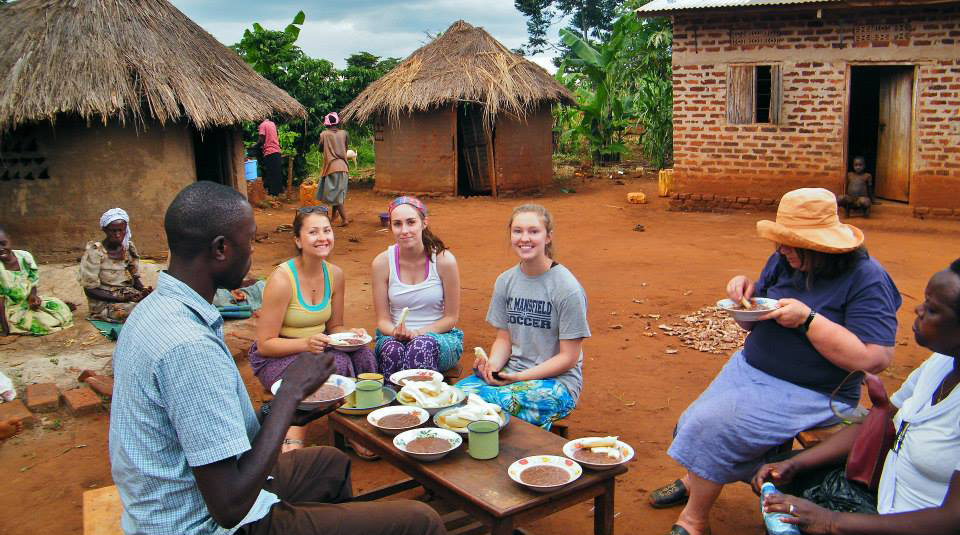
Clothing and Dress Codes
Dress codes can vary greatly depending on the country and the occasion. What’s considered casual wear in one country might be seen as too revealing or disrespectful in another.
This is particularly important to consider when visiting religious sites, where covering certain parts of the body may be mandatory. Some cultures have specific dress codes for different occasions or times of day.
In some countries, brightly coloured clothing is the norm, while in others, more subdued tones are preferred. It’s always a good idea to pack a variety of clothing options and to observe how locals dress to guide your choices.

Social Norms and Etiquette
Social interactions and etiquette can vary greatly across cultures. The appropriate way to greet someone, whether it’s a handshake, bow, or kiss on the cheek, differs around the world.
The level of formality in addressing others, particularly elders or those in positions of authority, can also vary. For example, removing shoes before entering homes or certain buildings is common.
Public displays of affection may be widely accepted in some places but taboo in others. The concept of personal space and privacy can also differ significantly between cultures. Tipping practices also vary greatly. In some countries, tipping is expected, while in others it is considered offensive.

Time and Punctuality
Attitudes towards time and punctuality can vary widely across cultures. In some countries, being on time is crucial and lateness is considered disrespectful. In others, a more relaxed approach to time is the norm, and arriving a bit late to social gatherings is expected.
Business meetings in some cultures may start promptly at the scheduled time, while in others, they might begin with a period of social conversation.
The pace of life and work can also differ, with some cultures embracing a slower, more relaxed rhythm, while others operate at a faster, more intense pace.
Religion and Traditions
Religious practices and traditions play a significant role in many cultures and can greatly impact daily life and social interactions. You must be aware of and respectful towards local religious customs, even if they differ from your own beliefs.
This might include observing quiet times during calls to prayer, dressing modestly when visiting religious sites, or being mindful of dietary restrictions during religious festivals.
Some cultures have specific days of rest or celebration where businesses may be closed or operating hours altered. Avoid making generalizations or stereotypes about religion.

Business Practices
If you’re travelling for business, you may encounter significant differences in workplace culture and business practices. The structure of business meetings, decision-making processes, and the importance placed on hierarchy can vary widely.
Building personal relationships is crucial before conducting business, or a more direct approach is preferred. This can vary depending on the culture of the country. The exchange of business cards, gift-giving practices, and acceptable topics for small talk can also differ between cultures.
Open-Mindedness and Respect
The key to a successful cultural exchange is open-mindedness and respect. Be willing to learn about different cultures and try new things. Remember, it’s okay to make mistakes, but you must be apologetic and learn from your mistakes.
Understanding and respecting these cultural differences when travelling abroad can greatly enhance your travel experience. It allows for more meaningful interactions with locals and helps avoid misunderstandings or unintentional offence.
Remember that these differences are part of what makes travel so enriching and educational. Approach new customs with an open mind and a willingness to learn.
While it’s impossible to be an expert in every culture you might encounter, showing genuine interest and respect for local customs goes a long way in building positive cross-cultural relationships.
Before your trip, take some time to research the specific cultural norms of your destination. This preparation will help you navigate new environments with greater ease and confidence, allowing you to fully immerse yourself in the unique experiences that international travel offers.
If you enjoyed this article, read more here.
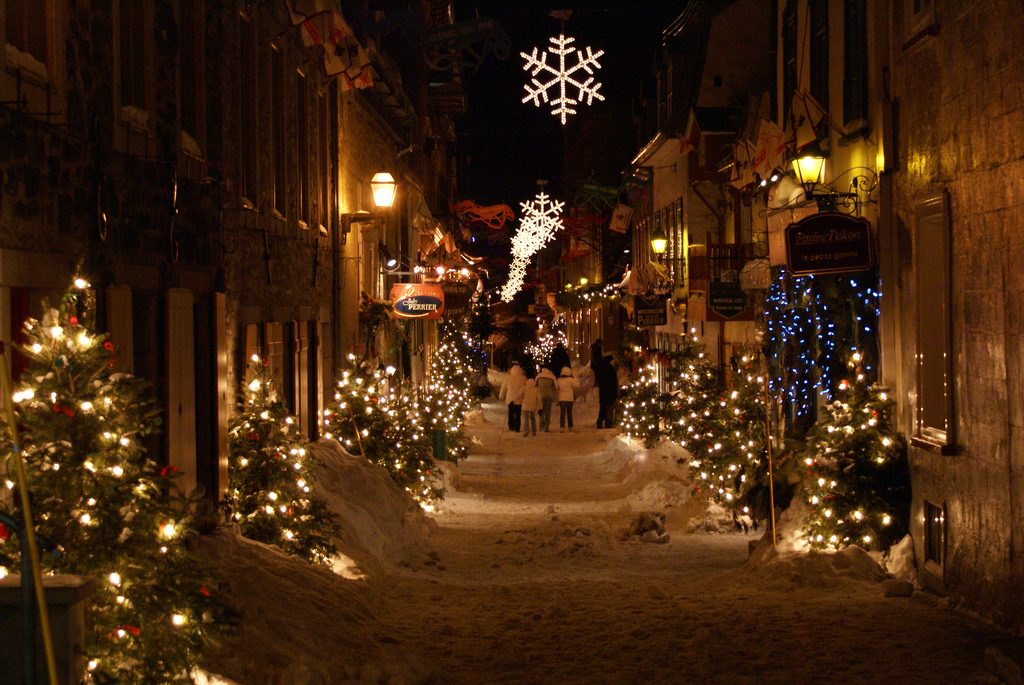
Christmas decorations transform cities worldwide into mesmerising wonderlands of light and art. These festive displays, filled with dazzling lights, intricate designs, and captivating installations, ignite excitement and joy in locals and visitors.
The brilliance of these decorations immerses people in the Christmas spirit, showcasing the magic of the holiday season. Streets illuminated with vibrant Christmas decorations foster a sense of togetherness, drawing communities closer and celebrating cherished traditions.
Beyond their beauty, these displays bring life and warmth to cities, making the festive season unforgettable.
Here is a look at some of the cities known for their unforgettable Christmas decorations, showcasing the best in festive light displays, artistic installations, and holiday spirit.
1. Rockefeller Centre, New York City, New York
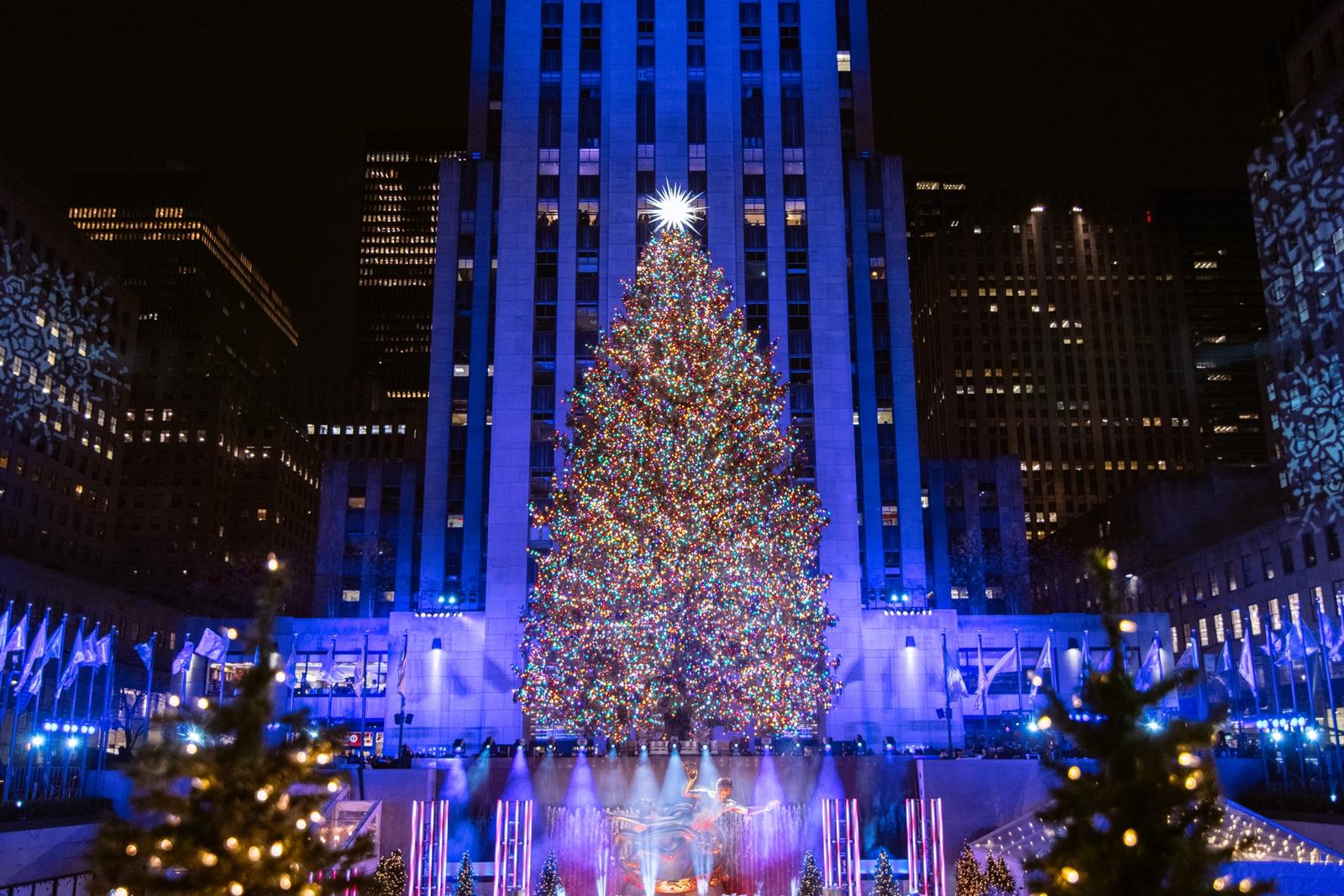
The Rockefeller Centre in New York City is world-famous for its grand Christmas tree and its holiday decorations.
Since 1933, the towering Norway spruce tree, adorned with over 45,000 lights, has been a staple of the city’s Christmas celebrations.
Every year, thousands of people flock to the centre to witness this breathtaking display. More than half a million visitors pass by the tree daily, many of them stopping to ice skate on the rink beneath it.
The Rockefeller Centre’s Christmas decorations are iconic, making it one of the must-see locations for anyone looking to experience the magic of Christmas decorations in cities.
2. Luci d’Artista, Salerno, Italy

In Salerno, Italy, the annual “Luci d’Artista” festival lights up the city with incredible art installations and light displays.
Running from November 29 to the end of January 2025, this event transforms the city’s squares and gardens into a winter wonderland.
The festival features unique light installations, including an LED replica of the night sky, an illuminated zoo, and enchanting lemon tree-shaped lights that pay tribute to the region’s famous citrus groves.
The beauty of Salerno’s Christmas lights and displays is sure to captivate anyone who has the pleasure of visiting this Italian city during the holiday season.
Salerno’s contribution to Christmas decorations in cities makes it an unforgettable experience for travellers.
3. Symphony of Lights, Hong Kong

Hong Kong’s Christmas celebrations are known for their impressive holiday markets, window displays, and vibrant concerts. However, the highlight of the city’s festive decorations is the “Symphony of Lights” show.
This multimedia light display involves more than 40 skyscrapers along Victoria Harbour, with a neon extravaganza lighting up the skyline in a way that is both awe-inspiring and beautiful.
The show is synchronised with music, creating a dazzling visual and auditory experience that captures the essence of the Christmas season.
Hong Kong’s Symphony of Lights is a shining example of the spectacular Christmas decorations found across the world.
4. Amsterdam Light Festival, The Netherlands
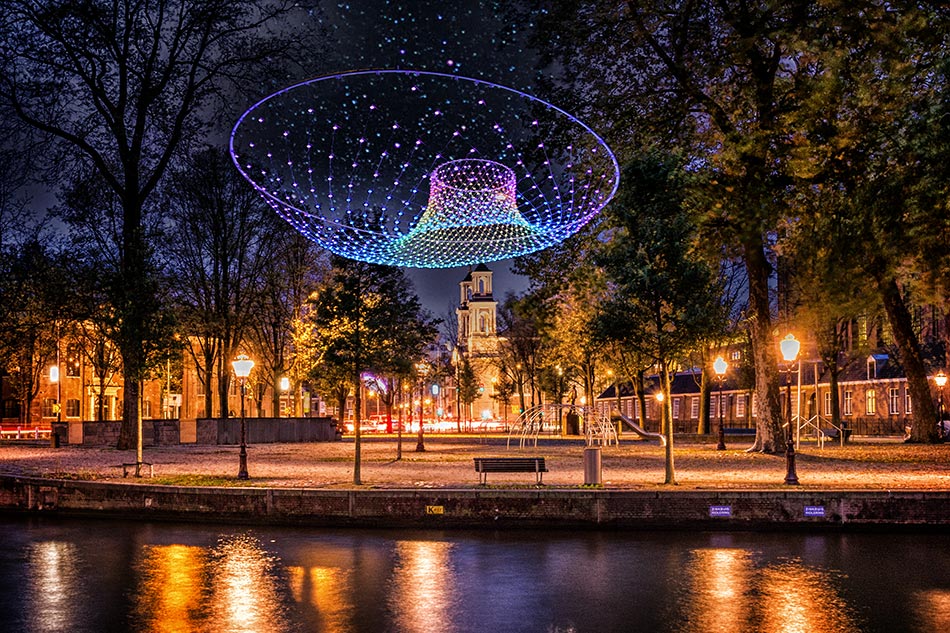
Amsterdam’s Amsterdam Light Festival is another must-see for anyone interested in the beauty of Christmas decorations.
Beginning on November 28 each year, this event features stunning light installations by international artists displayed along the city’s famous canals.
2024 marks the 750th anniversary of light installations in Amsterdam, making this year’s festival even more special.
Visitors can stroll along the canals, taking in the mesmerising sights of glowing sculptures, illuminated bridges, and other creative light displays.
The Amsterdam Light Festival’s unique integration of art and light showcases how cities can beautifully incorporate festive Christmas decorations into their architectural landscapes.
5. Oxford Street, London, England

London’s West End is synonymous with grandiose holiday decorations, and Oxford Street is at the heart of this festive spectacle.
The annual Christmas lights display on Oxford Street is a magical sight to behold, with thousands of shimmering lights illuminating the street from end to end.
The area is home to world-renowned shopping destinations and theatres, adding to the charm of the Christmas season.
Visitors can enjoy holiday shopping while taking in the stunning lights, and the surrounding festive decorations make the West End an unforgettable place to be during the Christmas season.
The city’s dazzling displays on Oxford Street are one of the most iconic examples of cities Christmas decorations.
The Uniqueness of Christmas Decorations in Each of These Cities
Each of these cities brings its own unique touch to Christmas celebrations through festive lights and decorations. New York’s Rockefeller Centre offers timeless elegance with its massive tree and rink. Meanwhile, Salerno provides a more artistic experience with its light sculptures and installations.
Hong Kong dazzles with modern technology through its multimedia light show, while Amsterdam’s Light Festival offers a blend of history and contemporary art along its picturesque canals.
London’s Oxford Street, on the other hand, brings a touch of glamour and shopping bliss to its Christmas celebrations. These cities’ Christmas decorations highlight the diversity and creativity with which cities around the world celebrate the holiday season.
Why Christmas Decorations Matter
Christmas decorations are not just for aesthetics; they hold cultural significance. They bring people together and help create a sense of community and belonging.
In many places, these lights and installations have become integral to the holiday season. This makes them a major attraction for both locals and tourists. They represent joy, hope, and the spirit of giving, which are central to Christmas celebrations.
As cities continue to innovate with their Christmas decorations, they provide an opportunity for communities to showcase their unique traditions and foster a sense of unity.
Visiting these destinations during the holiday season provides a chance to experience the magic of Christmas in a whole new light.
If you found this article helpful, you can read more here.

If you’re wondering about the best fun places to visit in Kaduna, this comprehensive guide will unveil four must-see destinations that promise unforgettable adventures.
Kaduna is a vibrant city in northern Nigeria. The city offers travellers an incredible mix of historical, cultural, and recreational experiences.
Let’s see the 4 fun places in Kaduna that you must visit!
1. Kaduna National Museum
When exploring fun places to visit in Kaduna, the Kaduna National Museum stands out as a top attraction. Located in the heart of the city, this museum showcases Nigeria’s rich cultural heritage.

Visitors can explore extensive collections of archaeological artefacts, traditional crafts, and historical exhibits.
The museum provides fascinating insights into the region’s historical developments. Its diverse exhibits tell stories of ancient civilisations, colonial periods, and Nigerian cultural diversity.
Photography enthusiasts will find incredible opportunities to capture remarkable displays of historical artefacts. Tourists interested in understanding northern Nigerian history will find the museum an essential stop.
The museum’s well-curated galleries offer immersive experiences that transport visitors through time.
2. Kajuru Castle
Adventure seekers must not miss Kajuru Castle. This extraordinary destination resembles a European mediaeval castle, offering a surreal experience in northern Nigeria.
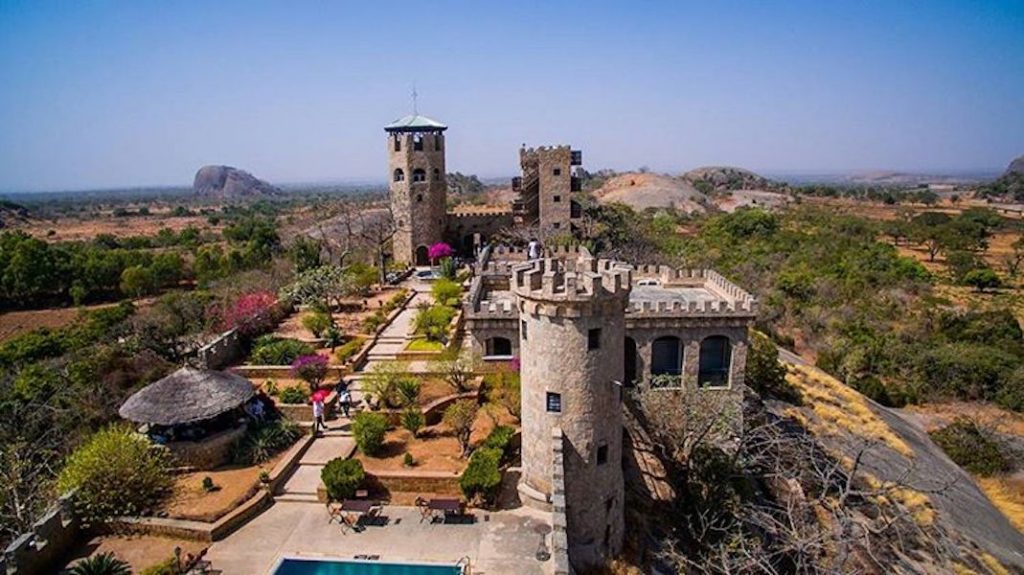
The castle sits dramatically on a rocky landscape, providing breathtaking panoramic views of the surrounding terrain.
Built by a German expatriate, the castle features unique architectural elements that fascinate visitors. Tourists can explore its intricate rooms, walk through stone corridors, and enjoy stunning photography opportunities.
The castle’s distinctive design makes it one of the most Instagram-worthy fun places in Kaduna.
Visitors can enjoy guided tours, learn about the castle’s fascinating history, and capture memorable moments.
The surrounding landscape offers additional opportunities for hiking, picnicking, and enjoying nature’s beauty.
3. Gbagyi Cultural Festival Ground
Cultural enthusiasts seeking fun places to visit in Kaduna will appreciate the Gbagyi Cultural Festival Ground. This location offers an authentic glimpse into local traditions, customs, and indigenous practices.

Visitors can experience vibrant performances, traditional music, and intricate cultural displays.
The festival ground hosts numerous events throughout the year, showcasing the rich heritage of the Gbagyi people.
Tourists can interact with local artisans, watch traditional dance performances, and purchase unique handicrafts. These experiences provide deeper insights into northern Nigerian cultural traditions.
Photography lovers and cultural researchers will find this destination among the most enlightening and fun places to visit in Kaduna.
The ground offers unique opportunities to document and understand local community practices.
4. Kofar Gamji Park
Kofar Gamji Park, also known as Hassan Usman Katsina Park, is a historic amusement park located in the heart of Kaduna, Nigeria.
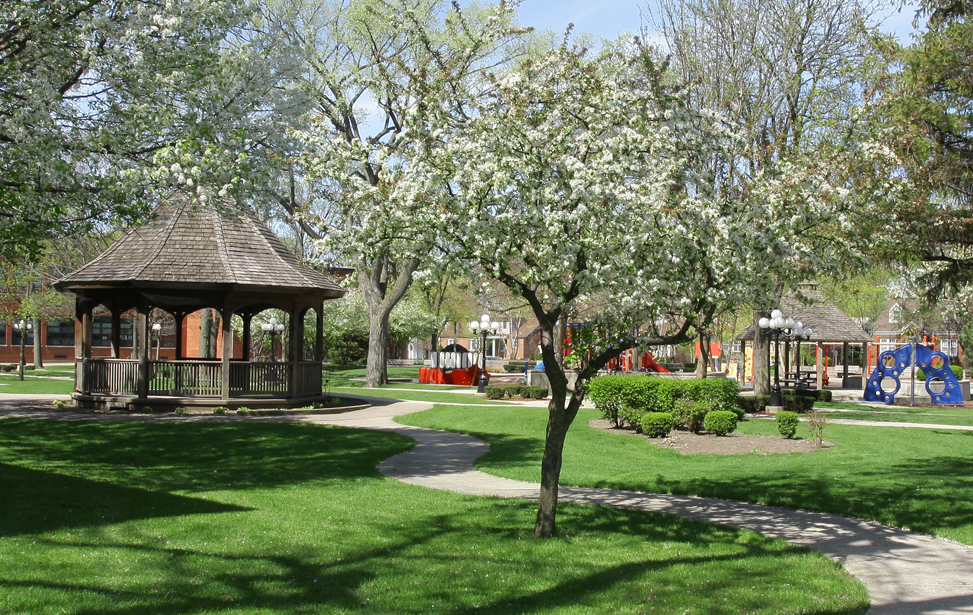
Established in 1914 during the colonial era, it was originally a garden for Lord Lugard, the British colonial administrator of Nigeria.
The park offers a variety of recreational activities for people of all ages. It features a zoo with a diverse range of animals, including lions, ostriches, cheetahs, and crocodiles.
There are also swimming pools, water slides, and other water attractions, making it a popular destination for families and friends.
In addition to its recreational facilities, Kofar Gamji Park is also known for its historical significance. The ancient Lord Lugard Bridge, which once connected different parts of the park, is a testament to the park’s rich history.
The park has undergone several renovations and rebrandings over the years. It was once known as Splash Park, but it has reverted to its original name, Kofar Gamji Park.
Despite these changes, the park remains a beloved destination for Kaduna residents and visitors alike.
Kofar Gamji Park is a great place to spend a day with family and friends. It offers a variety of activities for all ages, making it a perfect destination for a fun-filled day out.
Travel Tips for Exploring Kaduna
When visiting these fun places to visit in Kaduna, consider the following recommendations. :
- Wear comfortable walking shoes.
- Carry sufficient water and sunscreen.
- Respect local cultural practices.
- Take guided tours for better experiences.
- Bring a camera to capture memorable moments.
Best Time to Visit Kaduna
The best time to explore fun places to visit in Kaduna is during the dry season, typically between November and March.
During these months, weather conditions are more favourable for outdoor activities and sightseeing.
Accommodation Options
Kaduna offers various accommodation choices near these attractions. From budget-friendly hotels to more luxurious resorts, travellers can find suitable lodging options to complement their exploration of fun places to visit in Kaduna.
Conclusion
Kaduna offers travellers a diverse range of experiences across historical, cultural, and natural attractions.
Whether you’re interested in museums, mediaeval-style castles, cultural festivals, or wildlife adventures, these destinations promise memorable experiences.
Pack your bags, bring your sense of adventure, and prepare to explore the incredible fun places to visit in Kaduna. Each destination offers unique insights into the region’s rich heritage and natural beauty.
Check out more travel articles here.

Lagos, a vibrant cultural hub, offers a rich art scene filled with inspiring galleries. Whether you’re a seasoned art lover or a curious traveller, exploring the best art galleries in Lagos promises a journey through contemporary African creativity and history.
1. Nike Art Gallery
Nike Art Gallery stands out as one of the best art galleries in Lagos. Located in Lekki, this gallery is a sprawling four-story building housing over 8,000 artworks.
Founded by Nike Davies-Okundaye, it celebrates Nigerian heritage through traditional and modern art. You’ll find sculptures, paintings, textiles, and beadwork, showcasing talents from across Nigeria.
It’s not just an art gallery; it’s an immersive cultural experience where visitors can participate in workshops and meet artists.
2. Rele Gallery
Rele Gallery, situated in Ikoyi, is renowned for promoting contemporary African art on a global scale. As one of the best art galleries in Lagos, it features innovative exhibitions that challenge artistic boundaries.
Rele focuses on emerging and established artists, bridging the gap between local talent and international recognition. Their commitment to fostering new artists has made it a pivotal platform for modern African expression.
3. Terra Kulture
Terra Kulture, located in Victoria Island, is more than just an art gallery. It’s a cultural centre that hosts exhibitions, theatre performances, and art classes.
Known for promoting Nigerian culture, Terra Kulture regularly features works from leading and upcoming artists. Visitors can enjoy a variety of art forms, from paintings to sculptures.
Its dynamic atmosphere and diverse events make it one of the best art galleries in Lagos.
4. Omenka Gallery
Omenka Gallery in Ikoyi is a must-visit for art collectors. Founded by Oliver Enwonwu, the son of renowned artist Ben Enwonwu, the gallery focuses on contemporary and modern African art.
Its exhibitions often feature works from top Nigerian and international artists, contributing to its reputation as one of the best art galleries in Lagos. Omenka also engages in global art fairs, enhancing the presence of African art on the world stage.
5. Art Twenty One
Art Twenty One, located at the Eko Hotel in Victoria Island, offers a sleek, modern space dedicated to contemporary art.
The gallery showcases cutting-edge works from Nigerian and African artists, fostering a dialogue between local and global art scenes. Its exhibitions often push artistic boundaries, making it a favourite among art enthusiasts.
As one of the best art galleries in Lagos, Art Twenty One highlights the evolving landscape of African art through thoughtfully curated shows.
6. Kó Art Space
Kó Art Space is a dynamic creative hub that combines art, community, and education. The space hosts a variety of exhibitions, workshops, and events, offering a platform for emerging artists and cultural practitioners.
Kó Art Space is committed to fostering a vibrant and inclusive art scene in Lagos. The gallery’s innovative programming and commitment to community engagement make it a unique and exciting destination for art lovers.
By visiting these five art galleries, you can experience the vibrant and diverse art scene in Lagos. Whether you’re interested in traditional African art or contemporary works, you’re sure to find something to inspire and amaze you.
For more articles like this, click here.
Latest


3 Best Nigerian Drink Recipes To Share Love This Season
Are you planning to celebrate the holiday season by inviting loved ones to share delicious moments? You can delight them...
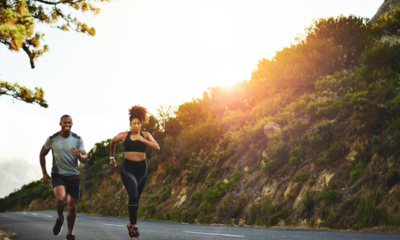

5 Ways To Stay Healthy This Christmas Season
The Christmas season is full of joy, food, and celebrations, but it can also be a time when health routines...


Trying These Would Make Your Synthetic Or Human Hair Wigs Luscious & Beautiful
Wigs, whether synthetic or made from human hair, are versatile tools for styling, enhancing your look, or providing a confidence...


5 Cities With The Best Christmas Decorations
Christmas decorations transform cities worldwide into mesmerising wonderlands of light and art. These festive displays, filled with dazzling lights, intricate...
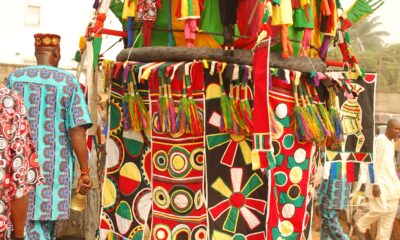

Ijele Masquerade: The “King Of Masquerades” In Igbo Land
The Ijele Masquerade, often referred to as the “King of Masquerades,” holds a revered position in Igbo culture. It is...


OdumoduBlvck Recounts How Don Jazzy Gifted Him $10,000
OdumoduBlvck recently praised Mavin Records founder Don Jazzy in an interview with Beats FM. The rapper discussed his latest project,...


Actress Eucharia Anunobi Preaches Against Seeking Validation From Others
Nigerian actress and evangelist Eucharia Anunobi shared a compelling message about self-empowerment through her Instagram platform on December 19, 2024....


Cleveland Cavaliers’ Forward Isaac Okoro Out For Two Weeks With Shoulder Injury
The Cleveland Cavaliers will be without forward Isaac Okoro for at least two weeks after he sustained a shoulder injury...


Tems Debut Album Ranks #2 On Billboard’s R&B List Of 2024
Tems’ Global Impact: A Billboard Recognition Tems, a global music sensation, has solidified her position as one of Africa’s most...


Adekunle Gold Reveals The Role Pheelz Played In Getting Him Signed To YBNL
Adekunle Gold marks a significant milestone this December 2024 as he celebrates 10 years since releasing his breakthrough single ‘Sade.’...
-Ad-




“Everybody Loves Jenifa” Can Beat ₦5 Billion – Funke Akindele

You Can Make Your Kunu Drink With This Simple Recipe

“A Ghetto Love Story” Rakes Over ₦22 Million At Box Office In Its Opening Weekend

“Family Gbese” Earns ₦28 Million In Box Office 2 Weeks After Its Release

Here’s The Best Recipe For Making Rice Fritters

5 Fashion Mistakes Men Make That Women Find Unattractive

Here Are The 5 Oldest Tribes In Nigeria

“Adire” Wins Best Cinematography At The 16th Best of Nollywood Awards

5 Cheapest States To Live In Nigeria

5 Things You Must Do To Make Sex Easy In Your Relationship
Trending
-

 MUSIC6 days ago
MUSIC6 days agoHere Are The Most Streamed Gospel Artists On Spotify Africa
-

 NEWS6 days ago
NEWS6 days agoNNPC Slashes Petrol Prices Nationwide
-

 FAB FRESH5 days ago
FAB FRESH5 days agoBurna Boy Set To Release New Single, “Bundle” This December
-

 ENTERTAINMENT6 days ago
ENTERTAINMENT6 days agoFunke Akindele’s “Everybody Loves Jenifa” Breaks Box-Office Records With ₦206 Million In Its Opening Weekend
-

 LIFESTYLE6 days ago
LIFESTYLE6 days ago7 Facts About Samuel Nwajagu, Mister International 2024
-

 ENTERTAINMENT6 days ago
ENTERTAINMENT6 days agoI Was Nigeria’s Sweetheart Until I Got Divorced – Tiwa Savage
-

 BEAUTY6 days ago
BEAUTY6 days agoNigerian Model, Samuel Nwajagu Becomes First African To Win Mister International Title
-

 MOVIES6 days ago
MOVIES6 days agoWatch The Trailer For Toyin Abraham’s Upcoming Movie, “Alakada: Bad And Boujee”




